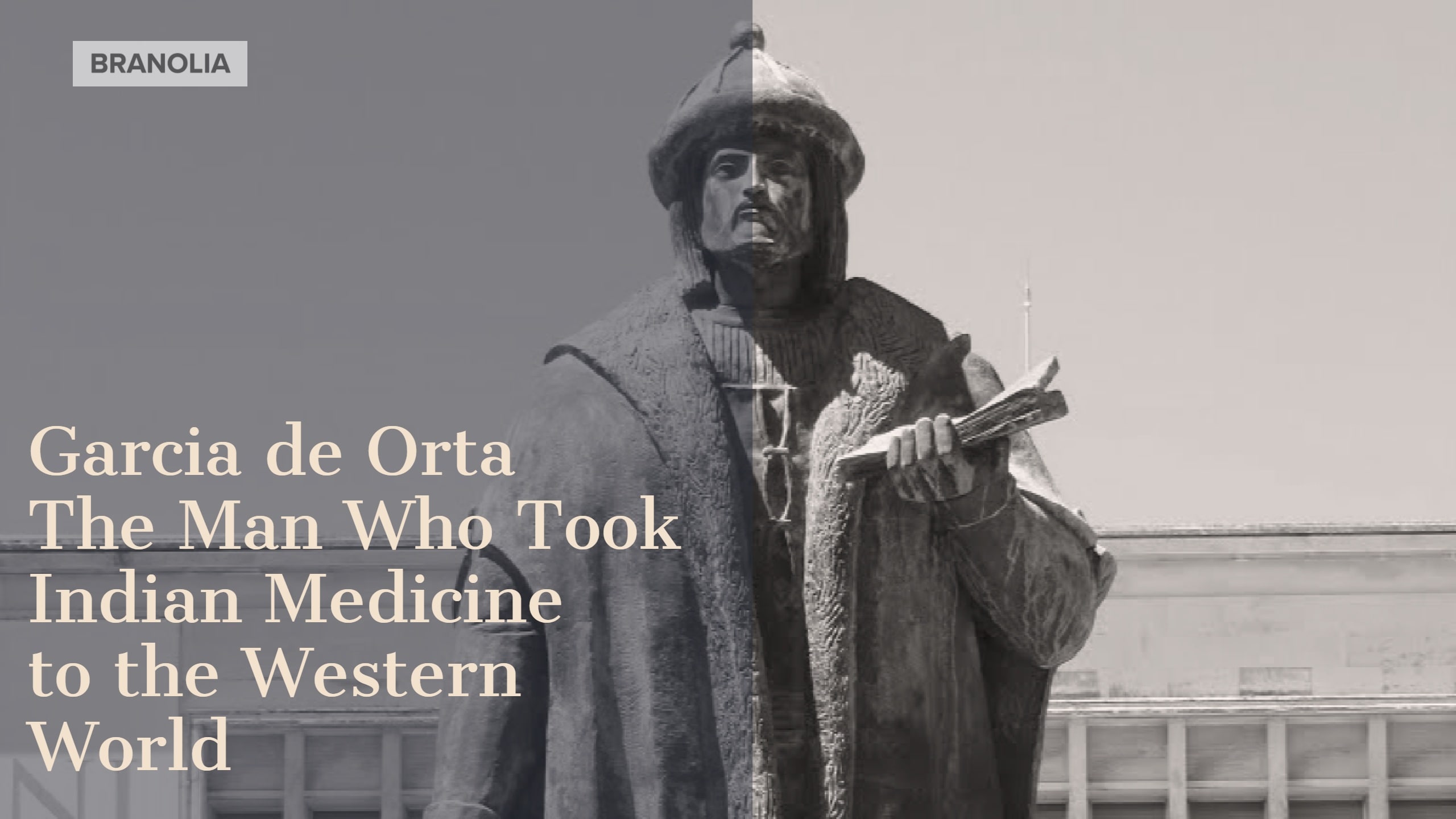Garcia D’Orta: The Man Who Took Ayurveda to the Western World

In the heart of Panjim is a beautiful municipal garden named Jardim Garcia de Orta. Built-in 1855 this garden is named after the Portuguese naturalist and physician Garcia de Orta who wrote the first-ever book on Indian tropical medicine by a western writer. His book the Coloquius was published at Goa in April 1563 and introduced Indian medicine to the western world.
Garcia de Orta life to say the least was tumultuous. His travails started even before his birth. His parents –Ferano da Orta and Leonor Gomes were part of the 120,000 Jews who moved into Portugal in 1492 from the neighbouring Spain where they faced religious persecution. All the Jews were forced into converting to Christianity and Garcia was born as a new Christian.
Garcia de Orta was born in 1501. His siblings were three sisters, Violante, Catarina, and Isabel. As we will see later, the formidable reputation of Garcia as a physician could not prevent his sister from being burnt by the Portuguese authorities in Goa for practicing Judaism.
Garcia studied medicine, arts, and philosophy at the Universities of Alcalá de Henares and Salamanca – the top institutions of learning in Spain. Following his father’s death, he graduated and returned to Portugal in 1523. He practiced medicine initially in his hometown and then in 1526 in Lisbon, where he gained a professorship at the university in 1530.
Garcia reaches Goa
At the age of 33, Garcia sailed for Portuguese India as Chief Physician aboard the fleet of Martim Afonso de Sousa, later to be named Governor. Garcia accompanied Sousa on various campaigns and soon had a flourishing medical practice, becoming chief physician concurrently to Burhan Nizam Shah I of the Nizam Shahi dynasty of Ahmednagar, and to several successive Portuguese Viceroys and governors of Goa. Garcia would remain in India for next 35 years and died in Goa in 1569.
Garcia de Orta married Brianda de Solis, in 1543. The couple had two daughters. In 1549, his mother and two of his sisters, who had been imprisoned as Jews in Lisbon, managed to join him in Goa. Jewish persecution continued to follow Garcia, and his sister was burned at the stake in 1569 for practicing Judaism. In an appalling act, much after Garcia’s death, his remains were removed from his grave and burned in 1580 by the Portuguese authorities on suspicion of being a practicing Jew during his lifetime. One of best medical researchers of his times in India, could not escape the clutches of the Portugal religious police.
Garcia de Orta and Indian Tropical Medicine
Garcia de Orta’s was a maverick. For the purposes of understanding Indian system of medicine, Garcia learned Marathi, Konkani, Sanskrit, and Kannada. He was also fluent in Portuguese, Spanish, Hebrew, Latin, Greek, Arabic, and Persian which gave him access to European and Arabic medical systems.
Garcia other than being an accomplished physician was a botanist. He would meet physicians and spice merchants from south Asia and the Indian subcontinent and would also send out agents and correspondents to collect for his seeds and plants. He had a laboratory and botanical garden which was probably the largest repository of medicinal plants at that time.
Garcia also travelled to Portuguese Ceylon (Jaffna) to study Sri Lankan medicinal plants. His book contains mention of the botanical treatment of snake bite and medicinal value of Datura. He broke certain myths as well e.g the western perception that Tamarind was procured from a palm tree. He was the first European to describe the symptoms of several Asiatic tropical diseases, notably cholera; he performed an autopsy on a cholera victim, the first recorded autopsy in India.
Garcia de Orta Seminal Work – Coloquius – Book on Medicinal Plants
De Orta was the first European writer on tropical medicine and a pioneer in pharmacognosy. His reputation rests on his book Colóquios dos simples e drogas he cousas medicinais da Índia (“Conversations on the simples, drugs and medicinal substances of India”) published at Goa in April 1563, which is a remarkable work. The book consists of 57 chapters and is primarily concerned with the identification and description of medicinal plants, followed by an account of their pharmacological and therapeutic uses. It also includes a treatise on ivory, diamond and Bezoar stone and there uses in traditional Indian medicine.
The book is essentially a discussion between de Orta and a fictitious Spanish colleague Dr. Ruano. Ruano is given the role of spokesperson for the classical authorities and de Orta represents himself as relying more on observation and experience than on received tradition.
Garcia de Orta’s work was accidentally discovered by Clusius in early 1564 and he translated it into Latin, while and this was widely read across Europe and underwent several editions. Garcia’s work influenced a number of later herbals and botanical works including those by Juan Fragoso, Nicolas Monardes, Hendrik van Rheedeand Jacobus Bontius.
The “Jardim Garcia de Orta”, a public garden in Lisbon, as well the “Escola Secundária Garcia de Orta” high school in Portland the “Hospital Garcia de Orta” in Almada, are named in his memory. A postal stamp of Garcia de Orta was released by Portugal in 1963. In 1971, the 20 Escudos banknote carried a picture of Garcia de Orta. It is heartening to note that Garcia de Orta who once considered as a heretic was reinstated by Portugal to the honour and recognition he deserved.
We at Branolia Chemical Works salute the work of Garcia de Orta for his pioneering and painstaking work on Indian medicinal plants and bringing this treasure in front of the whole world. The current acceptance of Ayurveda globally started 400 years back with Garcia de Orta. Branolia urges the Ayurveda community to recognize the contribution of Garcia de Orta and give him the place which he richly deserves.
[supsystic-social-sharing id="1"]
